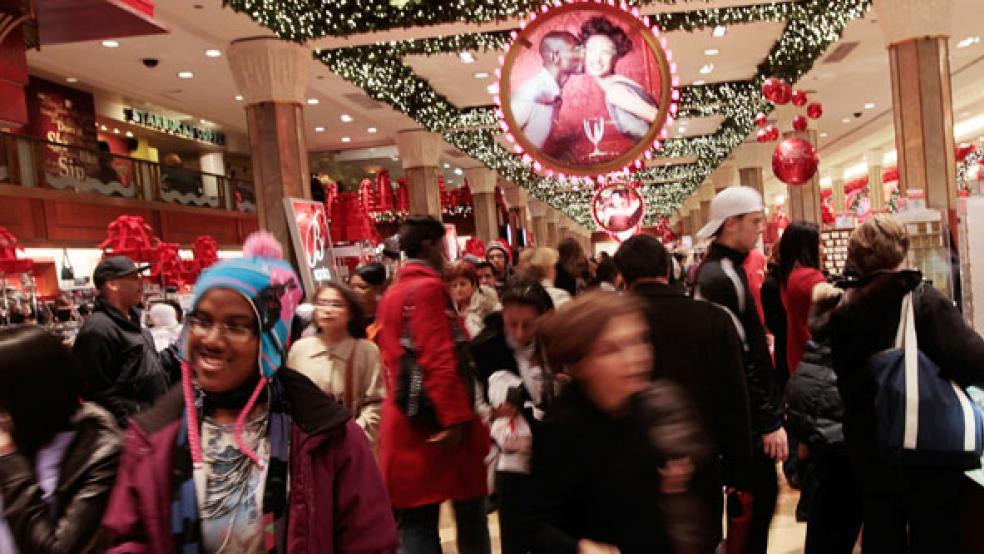Black Friday promises to once again be the biggest shopping day of the year, but the day after Thanksgiving will be different than in past years. Analysts expect sales this year to be up slightly from 2010, and companies will be doing everything they can to attract customers and boost sales. An annual survey of holiday shoppers by consulting firm Deloitte found that “the share of respondents who expect to spend more or the same amount as last year has risen 11 percentage points from last year's survey results.”
Here are five trends to expect as you prepare for your holiday shopping:
- "Black Friday Creep"
As the anticipation of Black Friday reaches a fever pitch, more and more companies are getting the jump on their competitors by offering Black Friday deals weeks in advance. The move is clearly an attempt to prime consumers and ramp up sales. E-tail giant Amazon (AMZN) began offering its Black Friday deals on November 1 – almost a month early. Traditional brick-and-mortar stores like Macy’s (M), Target (TGT), and Best Buy (BBY) are also getting in on the action. In addition to pre-Black Friday sales, they are also planning on opening their stores at midnight Thanksgiving night, to accommodate eager shoppers.
- You Can Have an App for That
Expect to see Black Friday shoppers checking their smartphones and tablet devices, even when they’re at the mall. A new study by research firm Accenture (ACN) says that 43% of holiday shoppers plan to use mobile devices to comparison-shop for the best deals. But the digital devices aren’t just for browsing –consumers are increasingly making purchases directly on their mobile devices, with 15 percent of shoppers expected to buy on their phones, up from 4.5 percent last holiday season, according to IBM Coremetrics Forecast.
- Layaway Plans Are Back
Major retailers are expanding layaway plans this holiday season to attract consumers wary of overloading their credit cards. Introduced during the Great Depression, layaway plans let customers stretch payments over a period of time, rather than paying the total all at once. National retail chains like Sears, TJ Maxx (TJX), Kmart, and Burlington Coat Factory all plan on offering layaway plans. Walmart (WMT) is offering – and heavily promoting – layaway programs for popular holiday gifts such as toys and electronics, and Toys “R” Us is offering layaway plans in 450 of its 600 stores nationwide. According to data compiled by ConsumerSearch.com in October, 42 percent of respondents indicated they expect to use layaway for holiday gifts this year. That may not always be a smart way to shop, though. Sen. Charles Schumer (D-NY) and consumer advocates are warning that the fees and charges of layaway plans could actually make them more costly than high credit card interest charges. Schumer is pushing retailers to clearly present the costs associated with layaway plans.
- HDTV Sales Are on the Fritz
Sleek new flat-screen televisions have been among the most coveted items on Black Friday wish lists in years past. But this year, industry analysts expect to see a decline in sales of HDTV’s from last holiday season. After an overall decline in TV sales in 2010, TV sales this year are expected to drop further, off about 2% from last year, according to data compiled by DisplaySearch, a research firm that tracks such sales. Companies that manufacture HD sets are also reporting depressing results. Sony’s ( SNE) consumer products division reported that year-on-year sales have fallen 17.9%. Analysts say the slowing of sales is a sign that the HDTV market is saturated as most people who wanted new flat-screen displays have already gotten at least one.
- Outlet Malls Are Where the Action Is
Traditional malls face bleak prospects. The average vacancy rate for shopping malls is at an 11-year high, rising to 9.4 % in the third quarter. But as America’s malls are increasingly turning into retail ghost towns, budget-conscience consumers are flocking in droves to outlet malls for all their favorite brands. According to market research firm NPD, apparel sales at factory outlets were up 17.9 percent from last year. In a souring economy, outlet malls are a no-brainer for brand-obsessed consumers who have figured out that outlets offer more than just unwanted department store leftovers. In fact, most items sold at outlet malls were never sold in full-price stores. The majority aren’t damaged or returned goods but first-run items produced specifically for outlet shoppers.





